Step 1: Creating an In-App flow in Webex Connect
To create an In-App flow, you must have access to Webex Connect tenant integrated with Webex Campaign. If you do not have access to the Webex Connect tenant, please reach out to your account manager for assistance.
Prerequisites: in-app-messaging
-
An In- App application - It is necessary to create an In-App application in Webex Connect before sending an In-App message. The process of creating an application can be found in the
Webex Connect documentation - Create an In-App Application.After creating the application and submitting it for approval, contact your account manager or support team to get it approved. Once the application is approved, any flow you create will be associated with this application. Based on your use case you can create multiple applications and associate flows with those applications.
-
A Data Stream - Apart from Webex Connect and Webex Campaign integration, a Data Stream has to be created to exchange information between the 2 products. Please contact your account manager or support team to create a Data stream.
The steps involved in creating an In-App flow are:
- Create a Service
- Create an In-App flow
- Publish the Flow in Webex Connect (it will be accessed from Webex Campaign)
- Copy the Service Key (it will be configured in Webex Campaign)
To create an In-App flow, follow these steps:
- Log in to the Webex Connect platform and click Services tab. It will display all existing services. You can create a new service and then a flow in the service or click an existing service and create a flow.
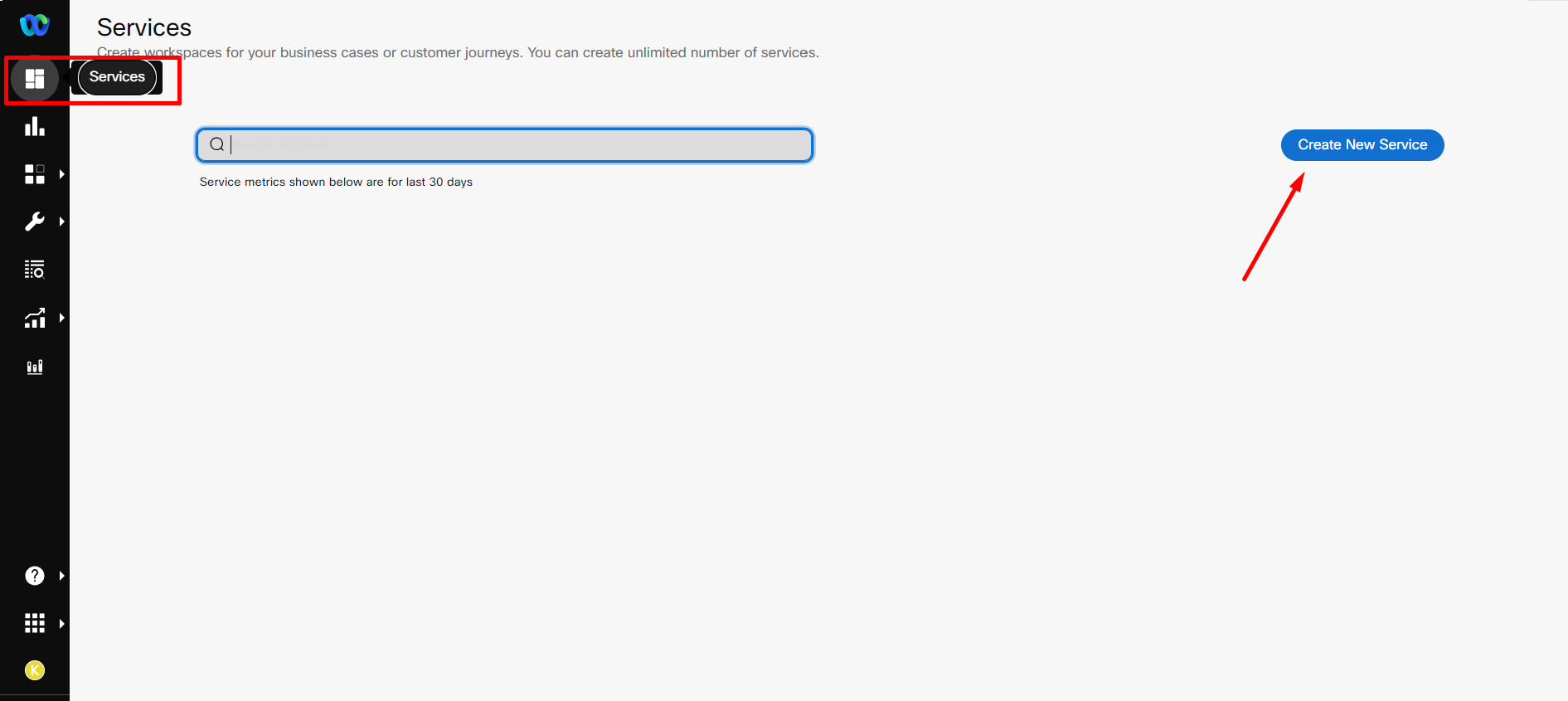
- To create a new Service, click Create New Service and enter a name. Click Create.

- Click Flows tab and click Create Flow.

- Enter a Name for the flow and ensure Method as New Flow and Start from Scratch are options selected. Click Create.
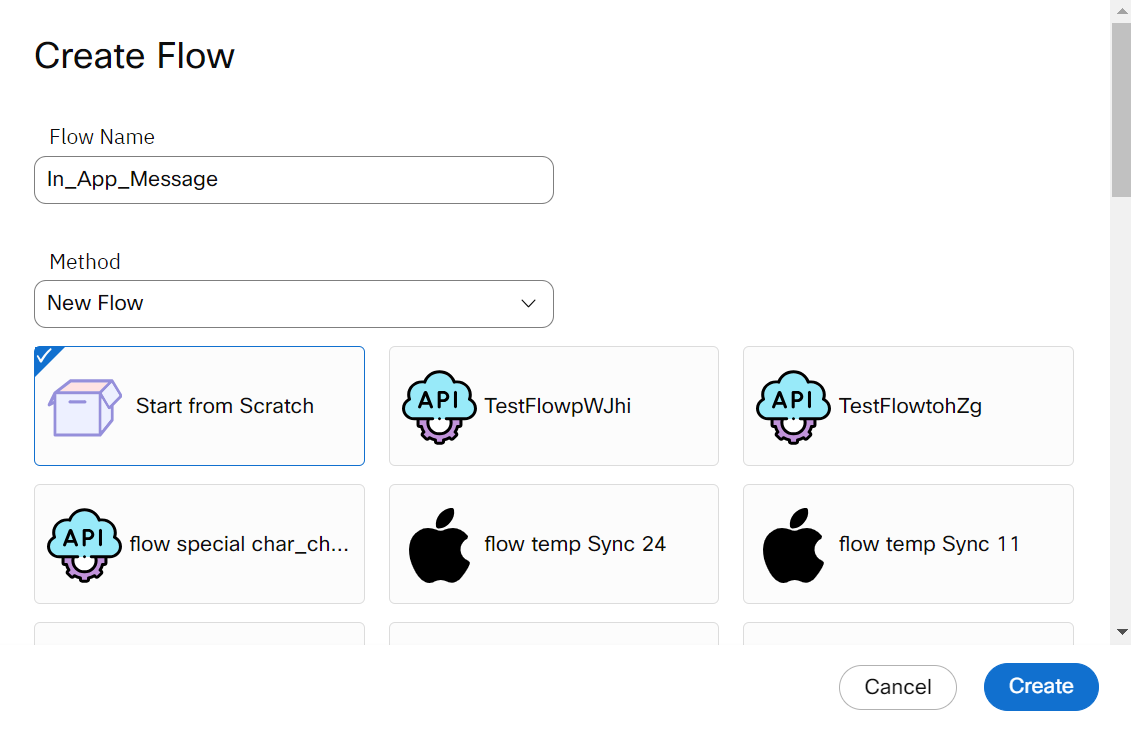
- This screen will display a list of channels and integrations. Search and select the trigger category as Webhook.
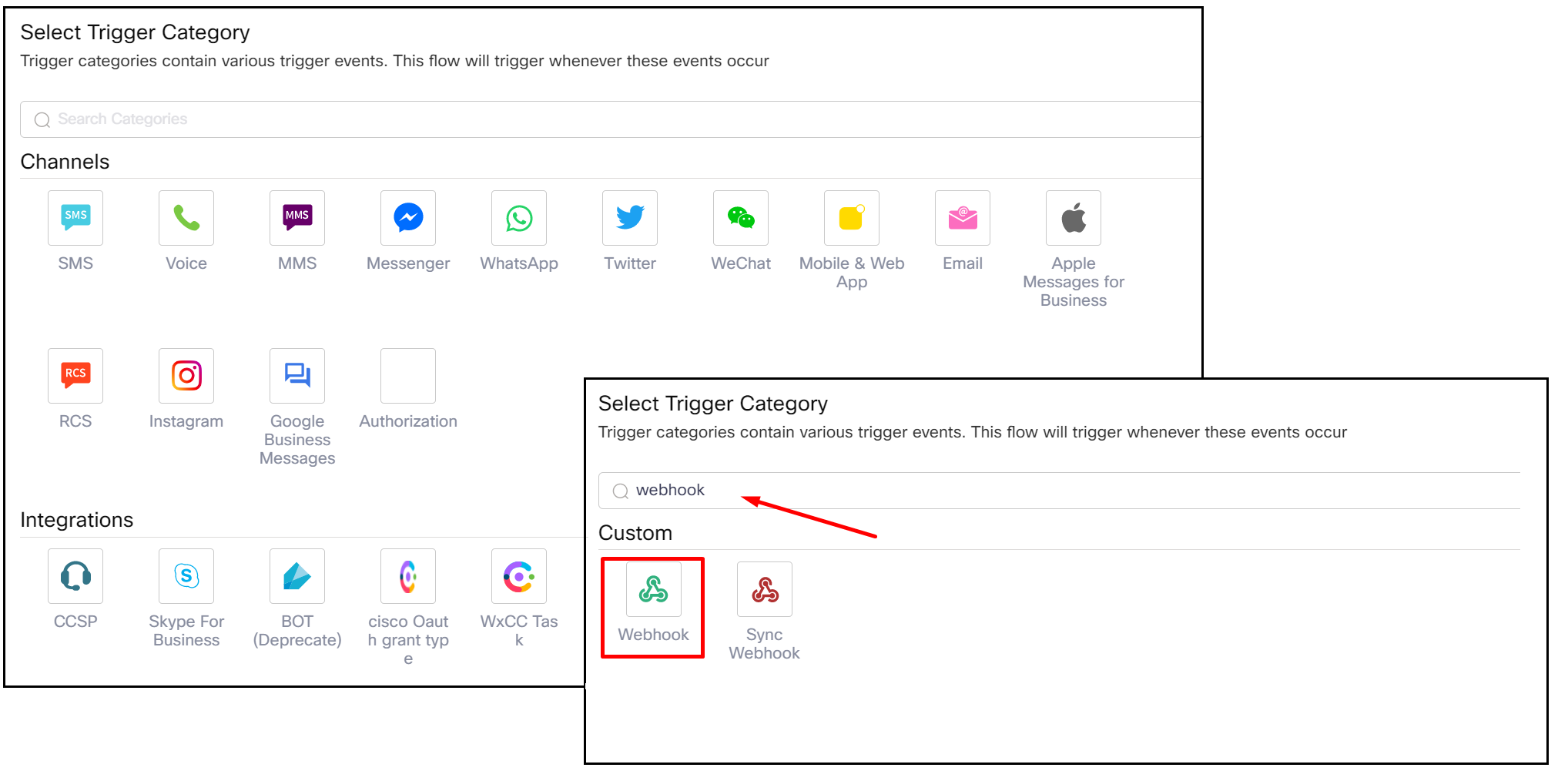
- Enter a name for the Webhook and click Save.
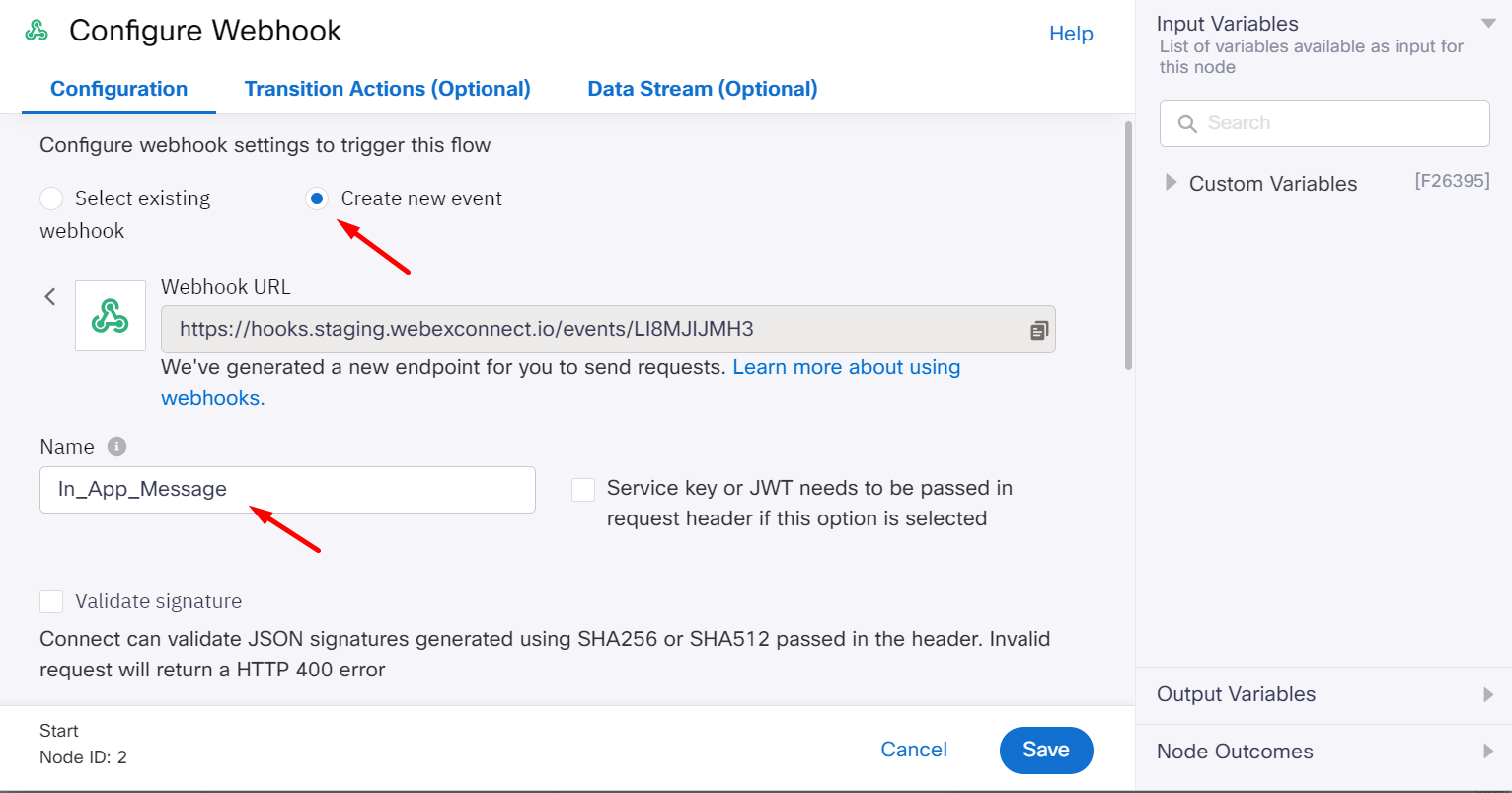
- The flow creation canvas will be displayed. From the Channels tab, drag and drop the In-App Message node onto the flow canvas.
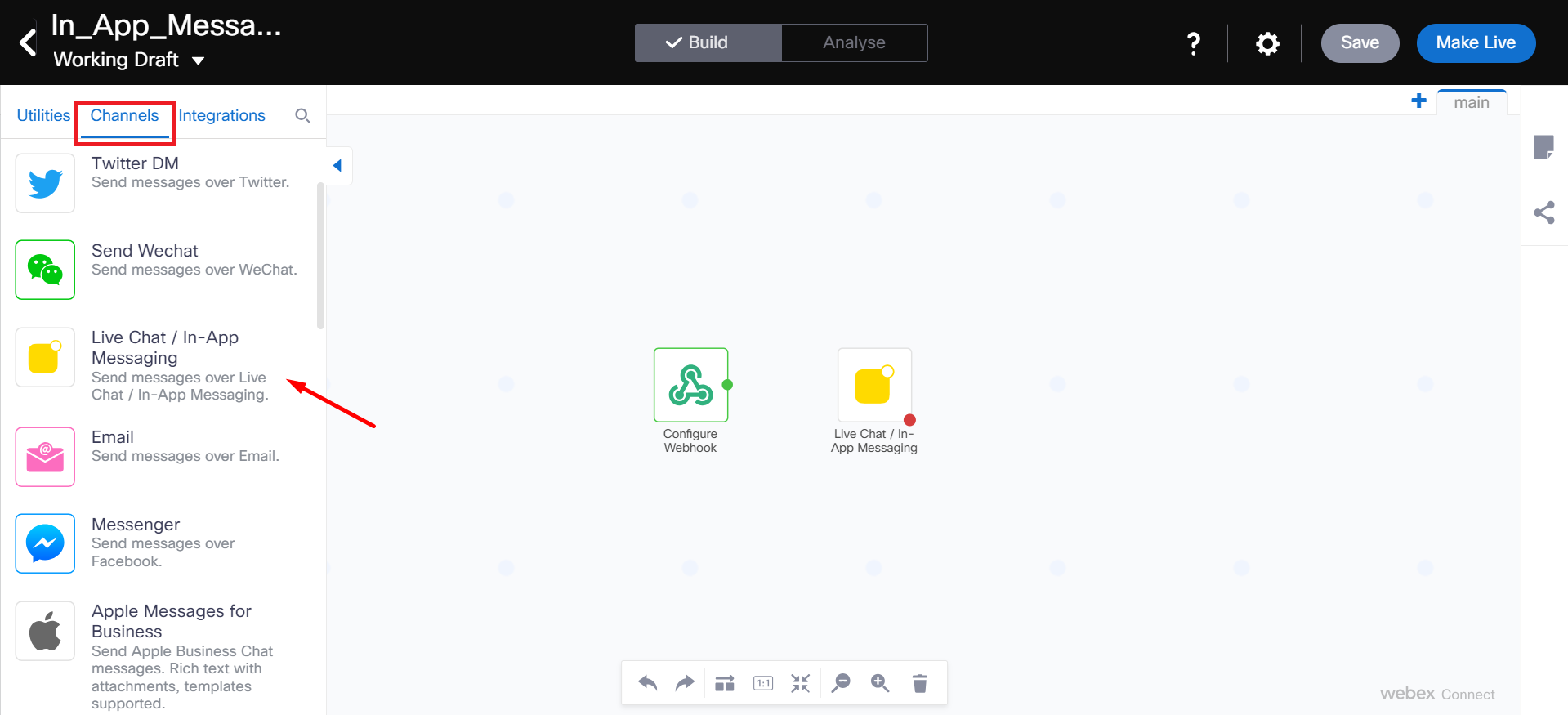
- Join the Webhook node and In-App Message node by drawing the green dot onto the In-App Message node.
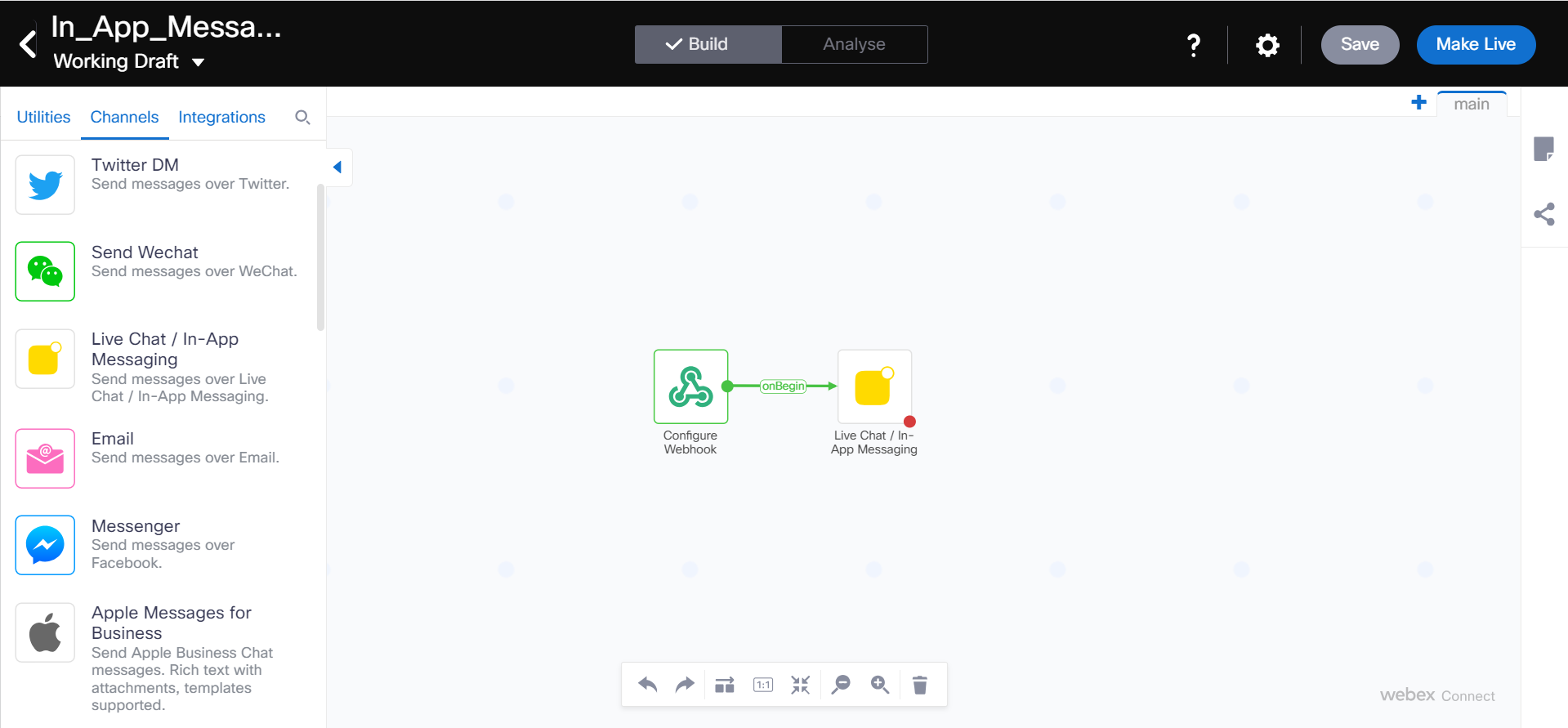
- Double click In-App Message node and configure the details as shown below:
- Destination Type: Select UserId from the dropdown list.
- Destination: Enter $(n2.inboundWebhook.USERID).
- Message Type: Select Message from the dropdown list.
- Message: Enter $(message).
- Thread ID Enter $(threadId).
- Notification Title: Enter $(notoficationtitle).
- Notification Text: Enter $(notoficationtext).
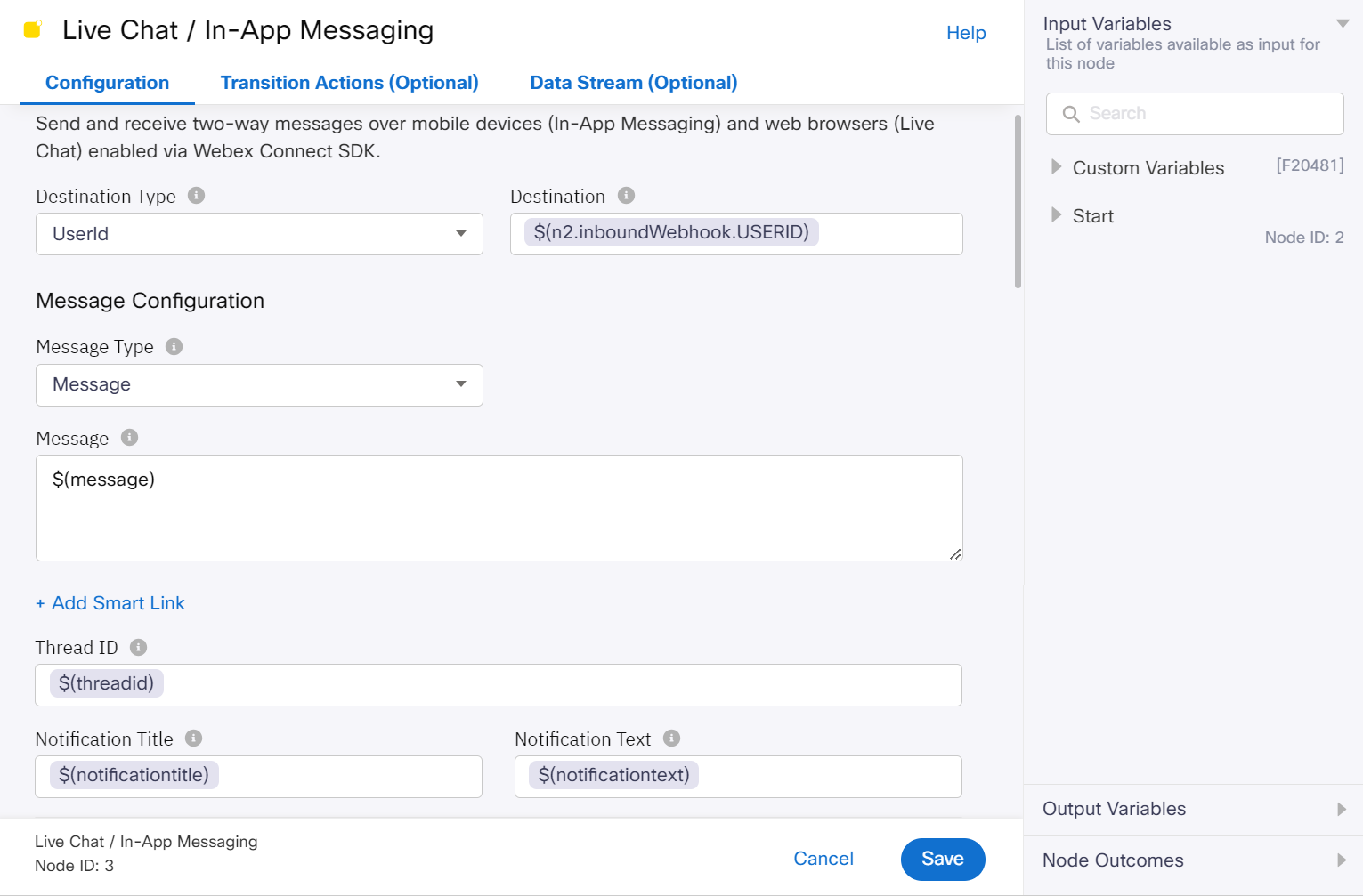
- Click Data Stream (Optional) tab and configure the details as shown below:
- Choose Integration: Select the pre-configured integration from the list.
This Integration has to be configured by the support team. Please contact your account manager.
- Configure the Parameter Name and Value as shown below:
| Parameter | Value |
|---|---|
| campCorelationId | $(unique_id) |
| deploymentId | $(deploymentId) |
| deploydate | $(deploydate) |
| wfUserId | $(USERID) |
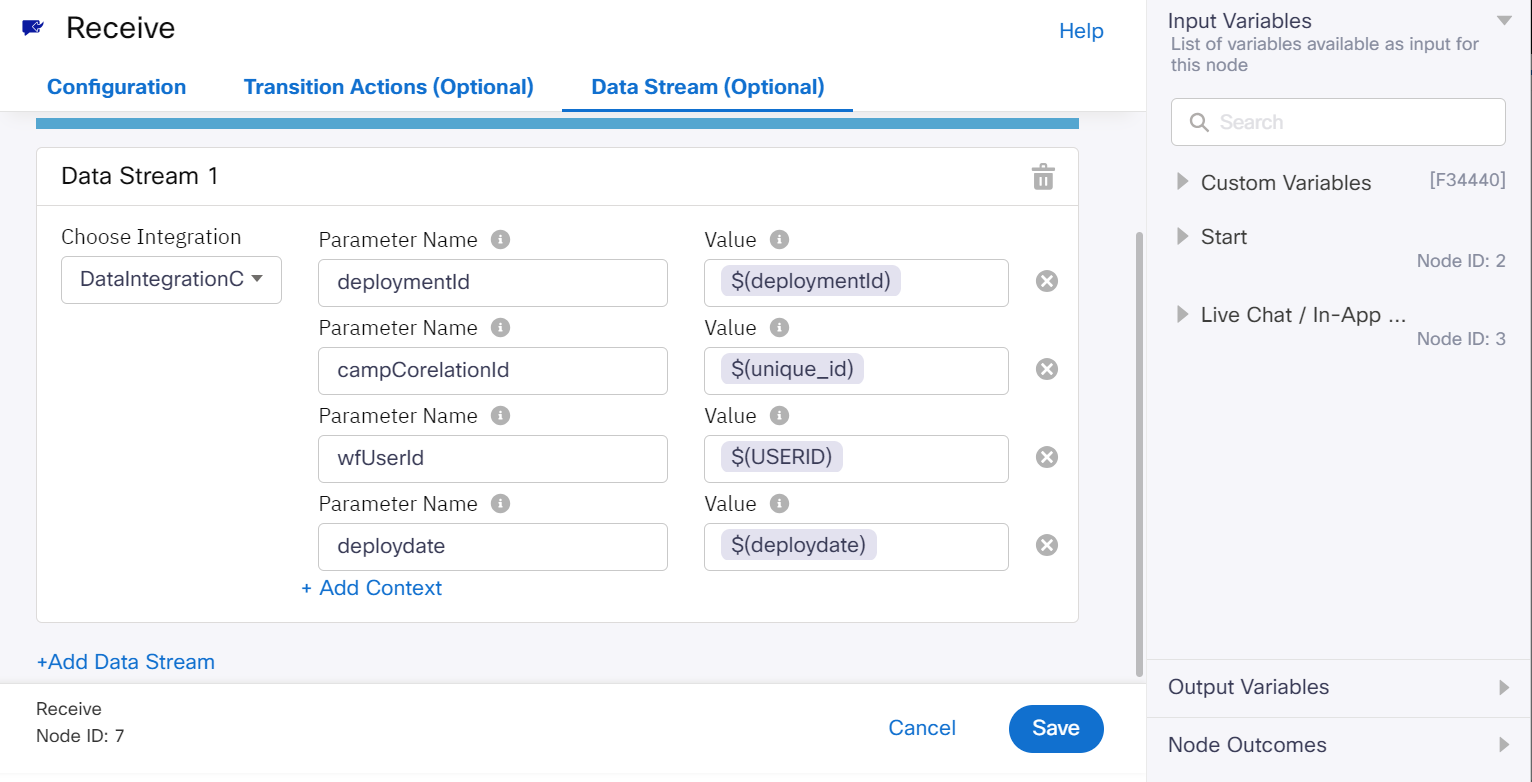
- Click Save.
- Configure the In-App Message node Events. Drag and drop the green dot. The event screen is displayed. From the Node Event drop-down, select OnSuccess and then select the success code and message as 101 from the Flow Result drop-down.

- Configure the onPolicyFail and onError events.

- Click Save.
- Click Make Live. This action is required to make the flow accessible from Webex Campaign.

- On the Asset Configuration screen, select the In-App application that was created before creating a flow and click Make Live.
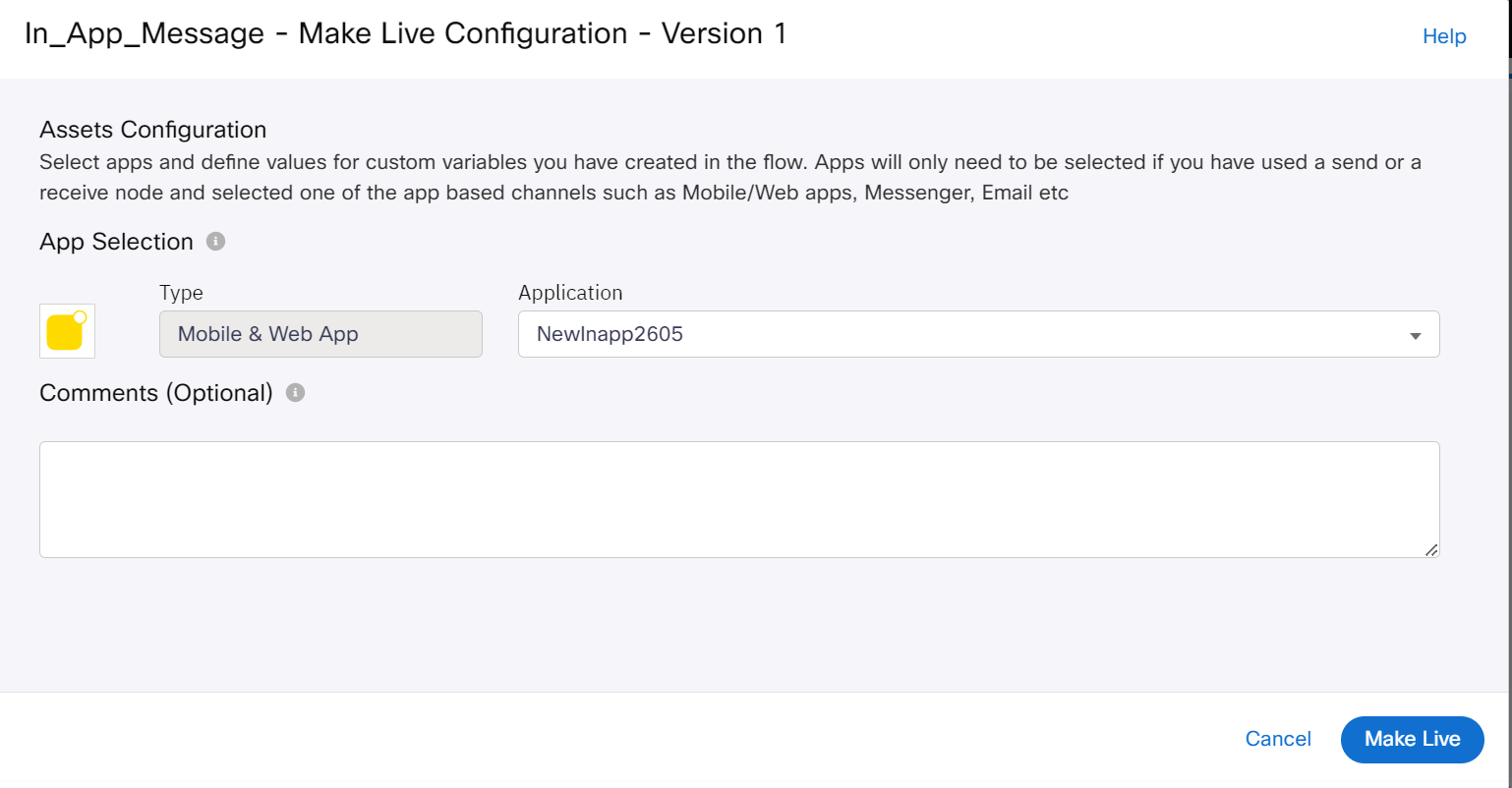
The In-App flow is now accessible from Webex Campaign.
To explore all the options of the In-App Message node and to create complex flows, refer to Webex Connect documentation - Create an In-App Application.
Configuring Receive Node
If your use case is to send In-App messages with URLs and capture the user clicks, then add a Receive node.
- Add Receive node onto the canvas. and join In-App Message node and Receive node as shown below.
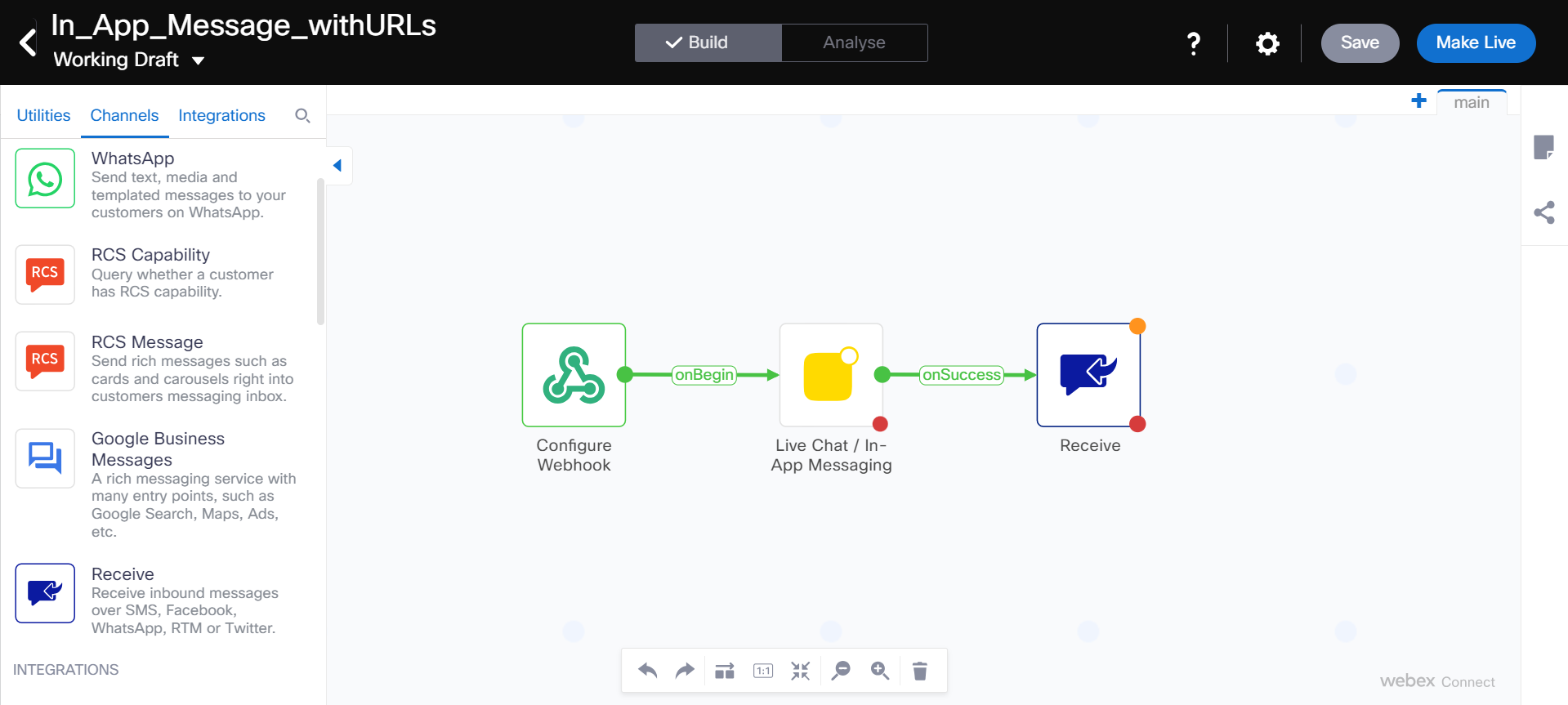
- Double-click Receive node and select Receive Live Chat / In-App message. The Receive node configuration screen appears.
- Configure the details as shown below:
- Max Timeout: Enter the duration in seconds, for which the node waits to receive a message on the In-App channel. If there is no incoming message within the specified period, the flow exits the node from the onTimeout event.
- From (Threadid) Enter the value as $(threadid).
- From (UserId) Enter the value as $(userid).
- Event Name: Select Postback from the drop-down.
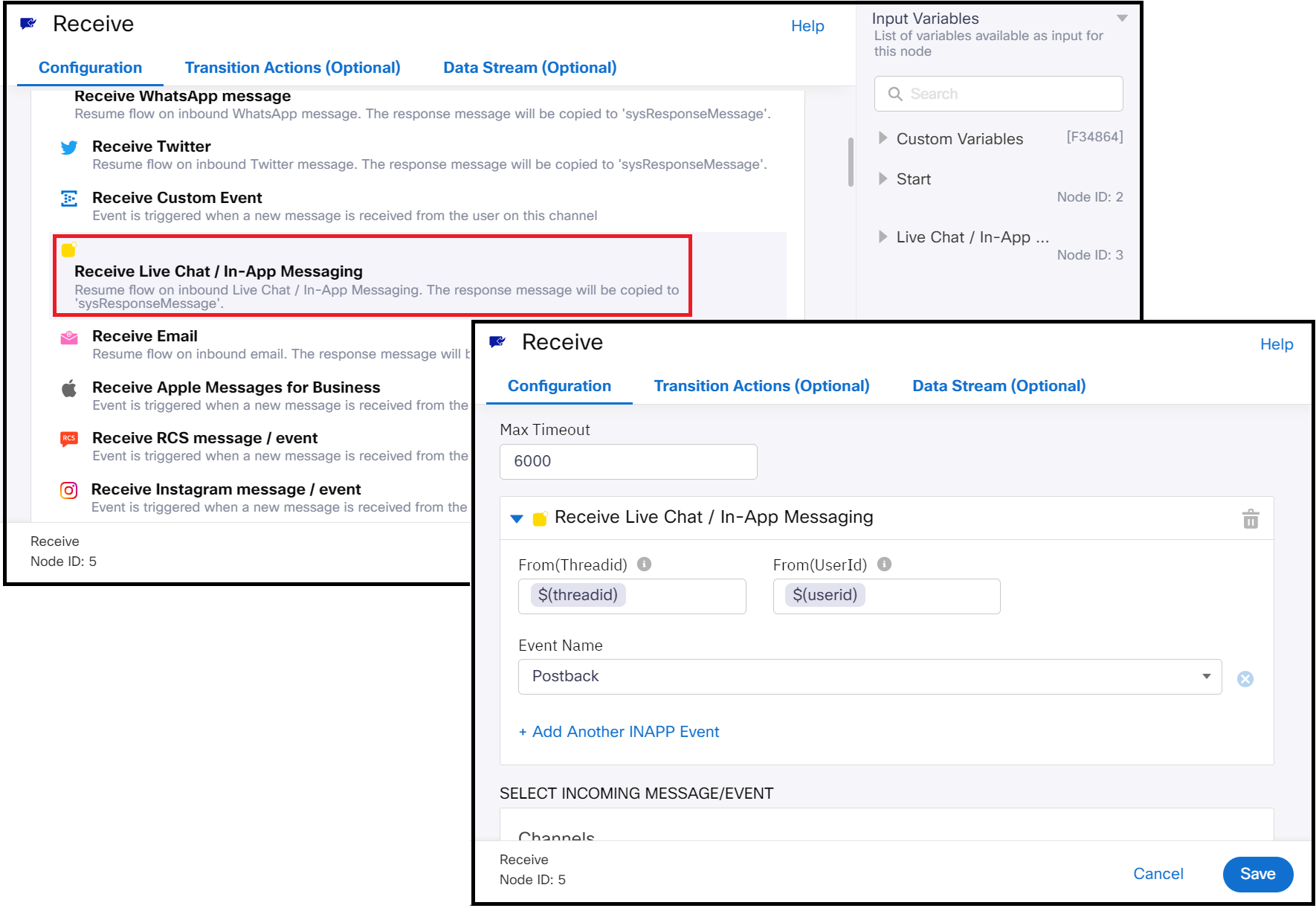
- Click Data Stream (Optional) tab and configure the details as shown below:
- Choose Integration: Select the pre-configured integration from the list.
This Integration has to be configured by the support team. Please contact your account manager.
- Configure the Parameter Name and Value as shown below:
| Parameter | Value |
|---|---|
| campCorelationId | $(unique_id) |
| deploymentId | $(deploymentId) |
| WfUserId | $(MSISDN) |
| deploydate | $(deploydate) |
| tenant_identifier | connqa2 |
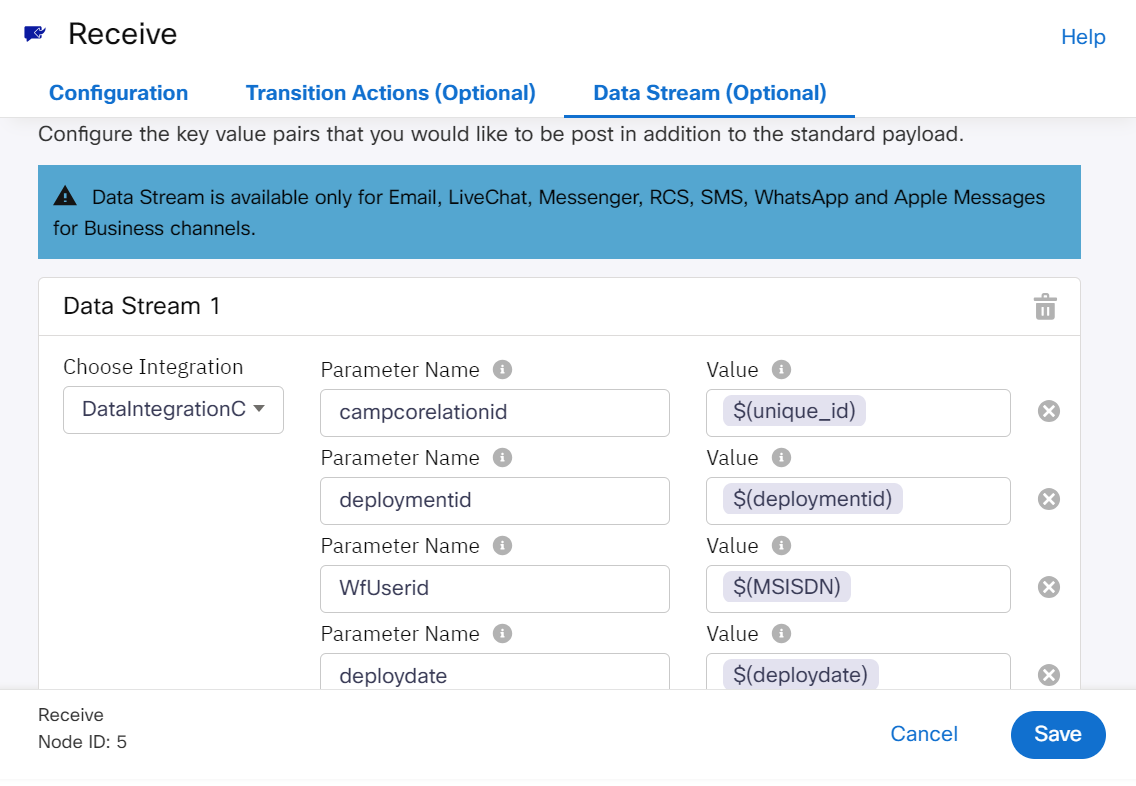
- Click Save.
Configuring Receive node Events
- Configure the Receive node Events. Drag and drop the Orange dot. The event configuration screen appears. From the Node Event drop-down, select onTimeout and then select 103 from the Flow Result drop-down. Click Save. Similarly, configure the Green and Red dots.
| Dot | Event | Flow Result |
|---|---|---|
| Orange | onTimeout | 103 - Flow ended due to an interruption [incomplete] |
| Green | app.onpostback | 101 - Successfully completed the flow [Success]. |
| Red | onError | 102 - Flow completed with an error [Error] |
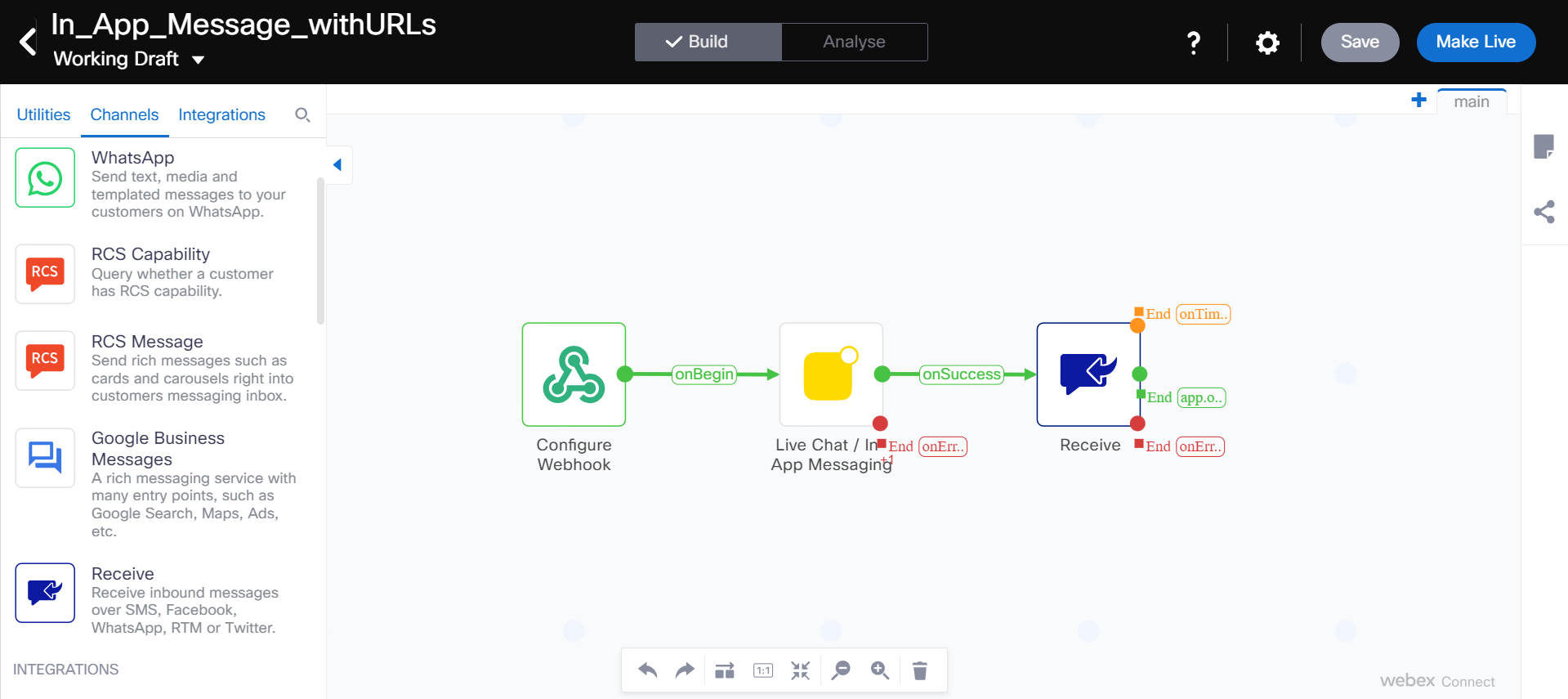
- Click Save.
- Follow the step numbers 15 and 16 above and publish the flow.
Copying a Service Key
Once an In-App flow is published, you have to copy the service key. This key has to be configured in External action in Webex Campaign.
To copy the service key, follow these steps:
- Go to the service in which the In-App flow is created and click API tab. Select Auth Type as Service Key.
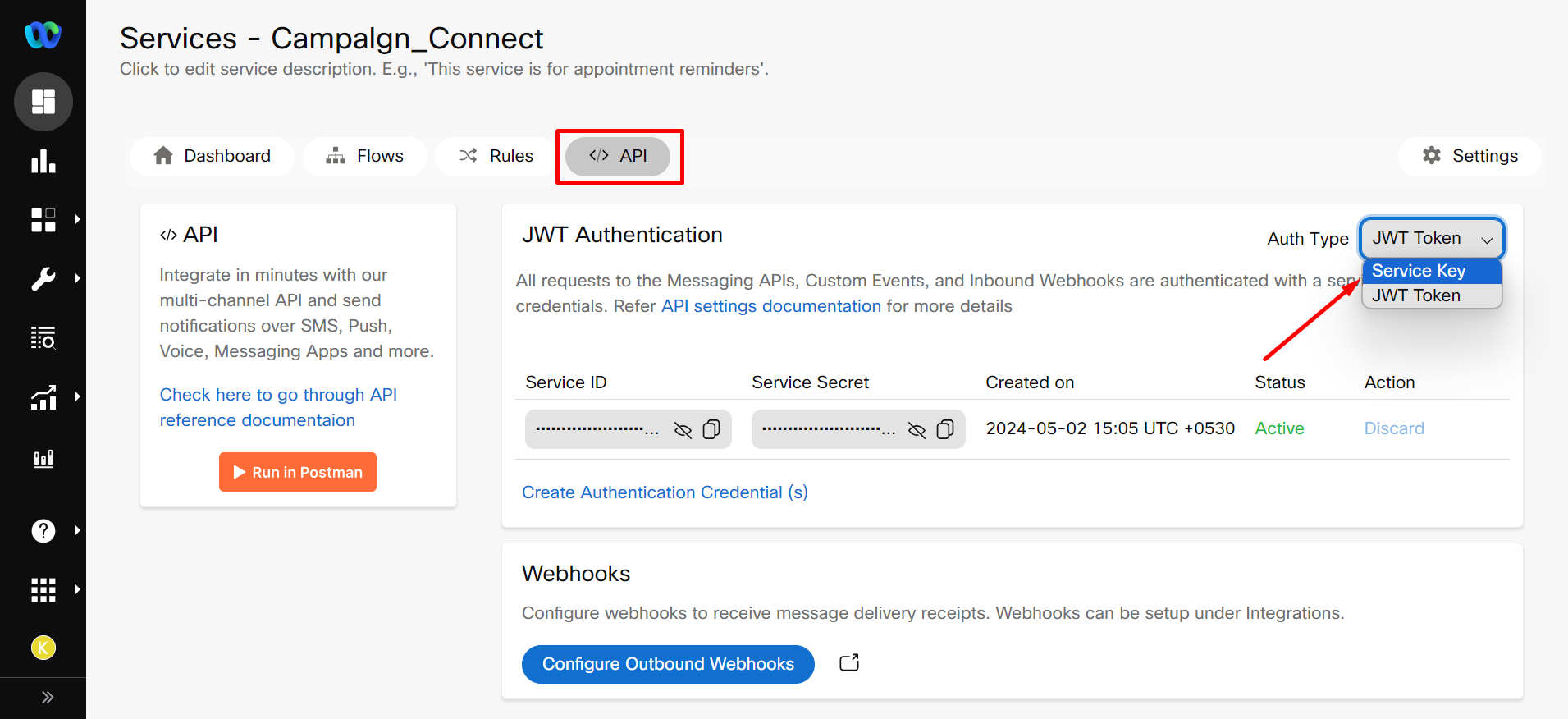
- On the Service Key details screen, click copy icon of the Service Key.
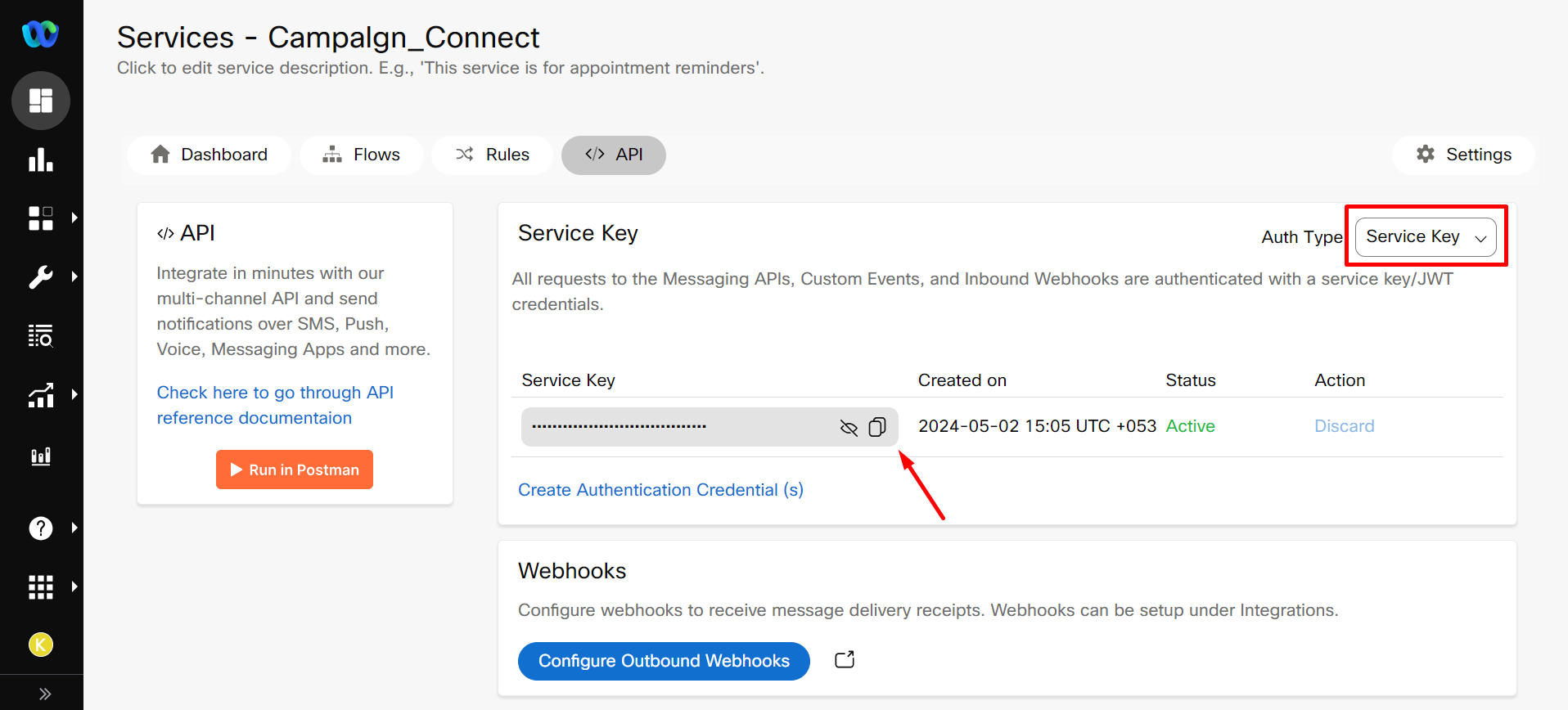
Keep this Service Key handy as it will be configured in External Action in Webex Campaign.
Updated 11 months ago